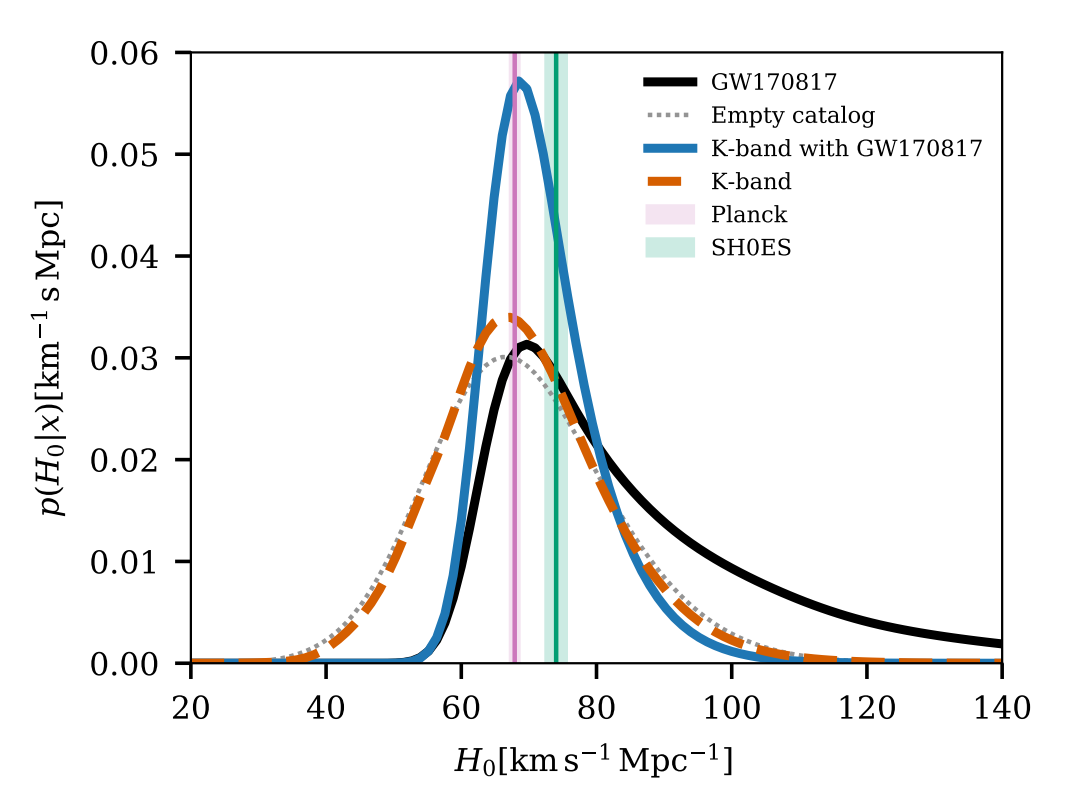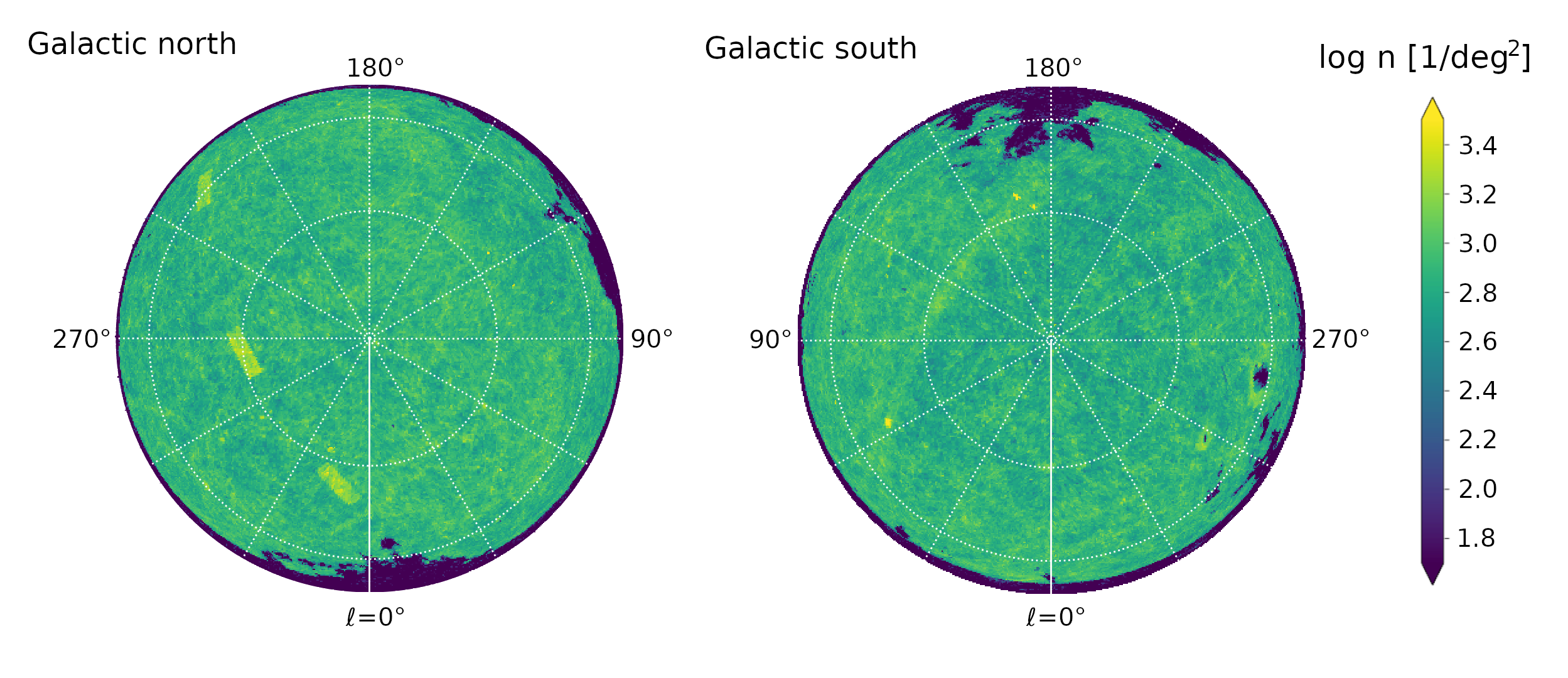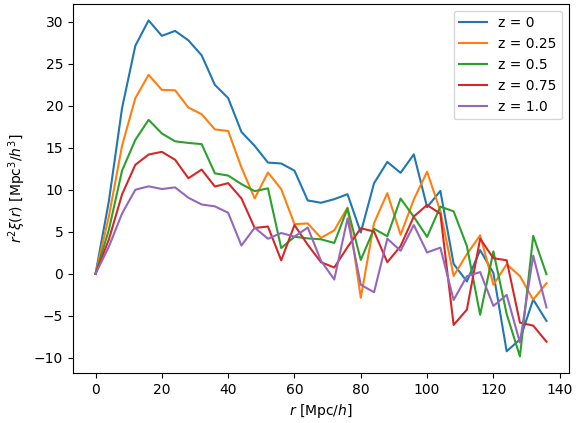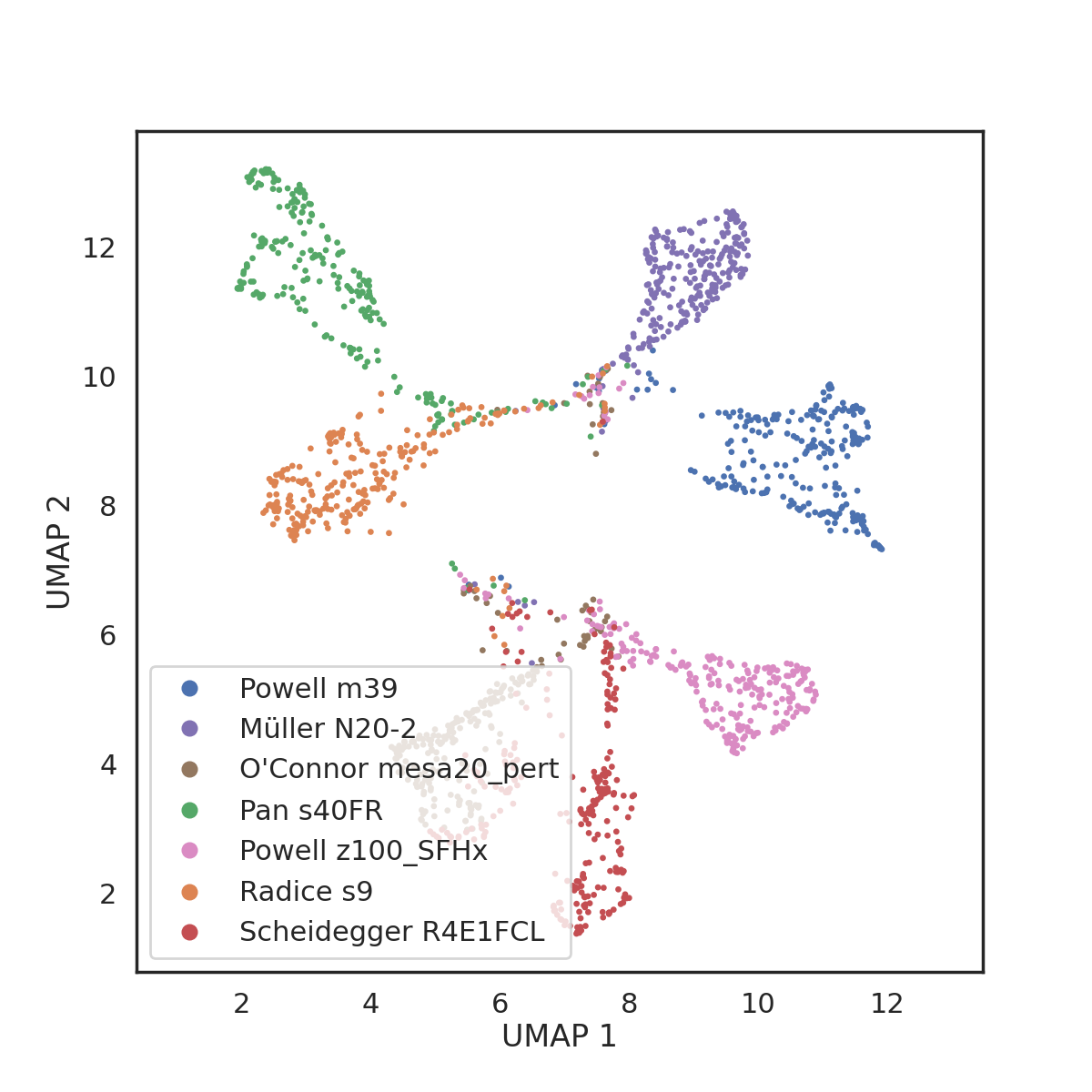Cosmology

The Hubble constant is one of the most important cosmological parameters describing the expansion rate of the universe. Its accurate measurement is crucial to give constraints on cosmological models. However, as the uncertainties of the measurements shrank in the last decade it became apparent that there is a statistically significant tension between Hubble constant values measured using different methods.
Gravitational waves (GWs) provide a new, independent method to measure the Hubble constant. The GW signal from a compact binary coalescence yields a distance estimate and a galaxy catalogue provides redshift information about the possible host galaxies, which together determine the Hubble constant. Working in the Cosmology working group of the LIGO–Virgo–KAGRA Collaboration, researchers of the Ghent Gravity Group play a key role in the development and application of the new method.
We led the development of the GLADE+ galaxy catalogue, one of the largest publicly available all-sky galaxy catalogues, which is used for the cosmological inference of the Hubble constant. Besides that, an earlier version of the catalogue, GLADE has been used by several teams to look for electromagnetic counterparts of GW detections. It also played a significant role in the multimessenger observation of the binary neutron star merger, GW170817, as most of the independent discoverers of the GW’s electromagnetic counterpart used the GLADE catalogue to optimize their efforts.


Just like galaxies observable in the EM spectrum, GW sources can serve as a probe to study the Large Scale Structure (LSS) of the universe. The clustering of matter can be related to the correlation function derived for compact binaries. This function encodes how likely two of these objects can be found at a certain distance, and displays features such as the baryon acoustic oscillation peak.
We study which LSS properties can be inferred with the unprecedented sensitivity of the third generation ground-based detectors such as the Einstein Telescope (ET). As members of the Einstein Telescope Observational Science Board, we investigate what role ET can play in the future of multi-messenger astronomy, and possible synergies with other research fields.

Astrophysics
Core-collapse supernovae are powerful and luminous explosions occurring at the end of the life of massive stars. Observing gravitational waves from supernovae is significantly more complicated than that from binary black holes or neutron stars, as different theoretical models suggest widely varying waveforms. Hence, we have to rely on model-independent search methods and algorithms such as BayesWave.
In the Ghent Gravity Group, we are interested in what sort of physical information we will be able to infer from a future observation of GWs from a supernova. To answer this question, we investigate state-of-the-art 3D supernova models and build machine learning algorithms to be able to distinguish between various types of supernova progenitors. We aim to determine the explosion mechanism and some physical parameters of the source, such as its mass or rotation velocity. Such a measurement combined with the electromagnetic observations of a supernova explosion would provide a unique opportunity to answer the most pressing questions about these extreme objects.